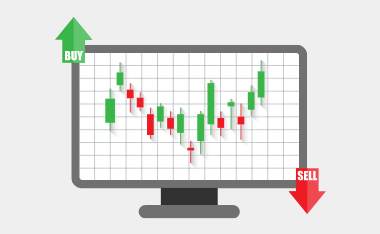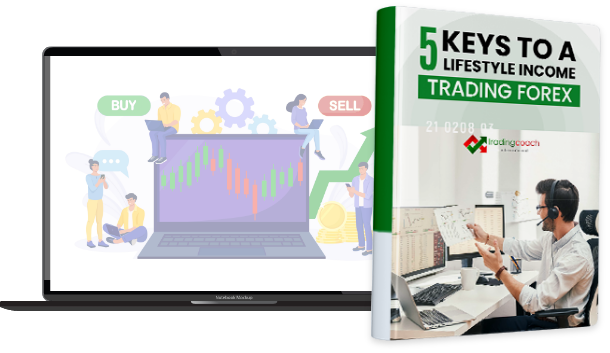Forex Capital Preservation: What Every Australian Retail Trader Needs to Hear

For Australian retail traders, the dream of consistent forex profits often collides with the harsh reality of blown accounts and emotional burnout.
The truth is, most traders fail not because of bad strategy, but because they mismanage risk, chase unrealistic gains, and lack the psychological resilience needed to navigate the markets.
Traditional advice like the “1% risk rule” often does more harm than good—it either stifles growth or gives traders a false sense of security while they slowly bleed their accounts dry.
This article breaks down a smarter approach to capital preservation, one that aligns with the LIFT methodology, emphasising strategic position sizing, disciplined profit-taking, and manual stop-loss management.
Unlike generic risk rules, this framework adapts to your trading performance, ensuring you only scale up when you’re truly ready—not when your emotions tell you to.
We’ll explore why most traders fail, how to structure your risk based on actual profitability (not arbitrary percentages), and why automated stop losses are a crutch for traders unwilling to take full responsibility for their results.
By the end, you’ll understand how to trade major currency pairs (AUD/USD, EUR/USD, GBP/USD) in 2025-2026 without falling into the traps that destroy most retail accounts.
Why Most Australian Forex Traders Blow Up Their Accounts
The statistics are brutal—over 70% of retail forex traders lose money, and a significant portion wipe out their accounts within the first year.
The reason isn’t necessarily a lack of skill or market knowledge, but a fundamental misunderstanding of risk and reward. Many traders enter the markets with unrealistic expectations, believing they can turn $1,000 into $10,000 in a few months.
This mindset leads to overtrading, excessive leverage, and emotional decision-making—all of which erode capital faster than any losing streak.
Another major issue is the blind adherence to outdated risk management rules, such as the “1% rule.”
While this rule aims to protect traders from large losses, it often does the opposite.
A trader risking just 1% per trade may feel safe, but if they take 20 trades a week with a 50% win rate, they’re likely to face significant drawdowns.
Worse, this approach doesn’t account for compounding—small losses add up, and small wins don’t generate meaningful growth.
The real problem is that most traders focus on how much they can make, not how much they can afford to lose.
They treat trading like gambling, hoping for a big win to solve their financial problems, instead of viewing it as a business where capital preservation is key.
The LIFT-Aligned Position Sizing Method: Risk Based on Performance, Not Guesswork
The LIFT methodology flips traditional risk management on its head.
Instead of using a fixed percentage (like 1% or 2%), your position sizing adjusts based on your actual trading performance and available capital.
Here’s how it works in practice:
1. Start Small—Very Small
Most traders begin with far too much capital at risk. Instead, your initial trades should be so small that a loss doesn’t even register emotionally.
If you have a $10,000 account, risking 10 pips per trade is too much if you’re unproven.
Start at a maximum stop loss of 3 to 4 pips until you have at least 50-100 trades of verifiable data.
2. Only Increase Risk When You’re Consistently Profitable
Once you’ve demonstrated a positive expectancy (your average win is larger than your average loss over a significant sample size), you can gradually increase your position size.
The key word is gradually—if you jump from 0.2% to 2% risk because you had a few good weeks, you’re setting yourself up for disaster.
3. Define Your Maximum Risk Tolerance Before Trading
Before you start trading, decide the maximum amount of your account you’re willing to lose. This is in the worst-case scenario.
For most traders, this should be no more than 10% of their total capital.
Once you hit that threshold, you stop trading. Then, reassess and only resume after fixing your strategy.
This approach ensures you only risk more when you’ve earned the right to. It prevents gambling larger sums in the hope of quick profits.
Manual Stop Losses vs. Automated Stops: Why Lazy Traders Lose
One of the biggest myths in forex trading is that automated stop losses protect you.
In reality, they’re often used as an excuse for poor trade management.
Here’s why:
- Brokers hunt stops – Large players know where retail traders place their stops and can trigger them before price reverses.
- Volatility spikes – News events can cause wild price swings, hitting your stop loss before the market moves in your favor.
- No flexibility – A rigid stop loss doesn’t account for shifting market structure.
Instead, manual stop management forces you to take responsibility for your trades.
This means:
- Adjusting stops based on price action (moving to breakeven when the trade goes your way).
- Exiting early if the trade premise is invalidated (even if price hasn’t hit your stop yet).
- Locking in partial profits at key levels, not hoping for a home run.
Automated stops are for traders who don’t want to think—manual stops are for traders who want to win.
Profit-Taking Strategies That Actually Work
One of the biggest mistakes traders make is holding winners too long, turning gains into losses.
Here’s how to lock in profits effectively:
1. Scale Out of Positions
Instead of exiting the entire trade at one target, take partial profits at logical levels. For example, 50% at 1:1 risk-reward, 25% at 2:1, and let the final 25% run. This ensures you bank profits while allowing for larger moves.
2. Move Stops to Breakeven
Once price reaches your first target, move your stop to breakeven. This guarantees that, at worst, you break even on the trade.
3. Trail Stops Manually
Rather than using a fixed trailing stop, adjust your exit based on market structure. If price starts stalling or showing reversal patterns, take profits. Don’t wait for a technical indicator to tell you to exit.
How This Approach Affects Major Currency Pairs (AUD/USD, EUR/USD, GBP/USD)
Trading major pairs with this methodology ensures you avoid common pitfalls of retail traders:
- AUD/USD – Highly sensitive to commodity prices and China’s economy. A disciplined risk approach prevents overexposure during volatile swings.
- EUR/USD – The most liquid pair, but prone to sudden moves from ECB/Fed policy shifts. Manual stops allow you to adapt to changing conditions.
- GBP/USD – Known for its volatility. Scaling in and out of positions helps manage risk during news-driven spikes.
In 2025-2026, with central banks potentially shifting policies, capital preservation will be more important than ever. Traders who follow a structured, performance-based risk model will survive—those who gamble won’t.
Final Word: Trading Is a Marathon, Not a Sprint
The traders who last in this game aren’t the ones chasing 100% monthly returns—they’re the ones who protect their capital first.
By using LIFT-aligned position sizing, manual stop management, and disciplined profit-taking, you put yourself in the minority of traders who actually succeed long-term.
If you find yourself hitting a wall—either emotionally or in your results—that’s the time to seek a trading coach, not after you’ve blown your account.
Disclaimer
Trading forex involves risk and may not be suitable for all investors. Past performance is not indicative of future results. Always conduct your own research before trading.
The information, strategies, techniques and approaches discussed in this article are for general information purposes only. The Trading Coach International does not necessarily use, promote nor recommend any strategies discussed in this article. The information in this article may not be suitable for your personal financial circumstances and you should seek independent qualified financial advice before implementing any financial strategy. The Trading Coach International is not a financial advisor and does not have AFS registration.




















